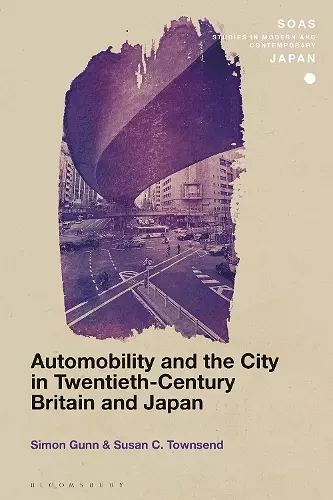Automobility and the City in Twentieth-Century Britain and Japan
Simon Gunn author Susan C Townsend author
Format:Hardback
Publisher:Bloomsbury Publishing PLC
Published:22nd Aug '19
Currently unavailable, and unfortunately no date known when it will be back

Examines how mass motorization reshaped cities in Japan and Britain during the twentieth century, focusing on two leading ‘motor cities’, Nagoya and Birmingham.
Automobility and the City in Twentieth-Century Britain and Japan is the first book to consider how mass motorization reshaped cities in Japan and Britain during the 20th century. Taking two leading ‘motor cities’, Nagoya and Birmingham, as their principal subjects, Simon Gunn and Susan C. Townsend show how cars changed the spatial form and individual experience of the modern city and reveal the similarities and differences between Japan and Britain in adapting to the ‘motor age’. The book has three main themes: the place of automobility in post-war urban reconstruction; the emerging conflict between the promise of mobility and personal freedom offered by the car and its consequences for the urban environment (the M/E dilemma); and the extent to which the Anglo-Japanese comparison can throw light on fundamental differences in cultural understanding of the environment, urbanism and the self. The result is the first comparative history of mass automobility and its environmental consequences between East and West.
Automobility and the City is an unusual and rewarding work of comparative history, * Journal of British Studies *
Automobility and the City in Twentieth-Century Japan and Britain is an exciting and thought-provoking piece of scholarly research. It discusses the realities of automobilisation in Britain and Japan by focusing on their representative motor cities, Birmingham and Nagoya, providing readers with the insight necessary to consider the future of automobility. * Dr Junichi Hasegawa, Keio University, Japan *
Cars transformed cities around the globe: Gunn and Townsend illuminate this worldwide phenomenon by looking in depth at the “motor cities” of two very different automotive powerhouses. Even as their careful analysis of ideas, plans, and controversies in Birmingham and Nagoya highlights the differences between Britain and Japan, it reveals the cross-cultural sway of the automobile with their stories of how cars conquered cities and divided citizens. * Dr Brian Ladd, University of Albany, USA *
This book […] offers a temporally, geographically, and conceptually expansive study of the origins, ascendance, partial displacement, but ultimately lasting–and, alas, possibly terminal–legacy of what the authors label the ‘modern car system’. Though grounded in this pair of second cities, Birmingham and Nagoya, the authors’ arguments extend beyond either particular case. By historicizing an object of study that should be as striking as it is familiar, the ‘modern car system’; and by analysing that system in a frame that reaches not merely across the Channel or Atlantic, but indeed across the hemispheres; this book enables historians, sociologists, planners, engineers, and policymakers to better understand a defining feature of the present: our cities’ organization around a system linking drivers in Birmingham to commuters in Nagoya, and both to an oil economy stretching from Dallas to Riyadh. * Guy Ortolano, Professor of History, New York University, USA for Reviews in History (2020) *
ISBN: 9781350075931
Dimensions: unknown
Weight: 558g
272 pages